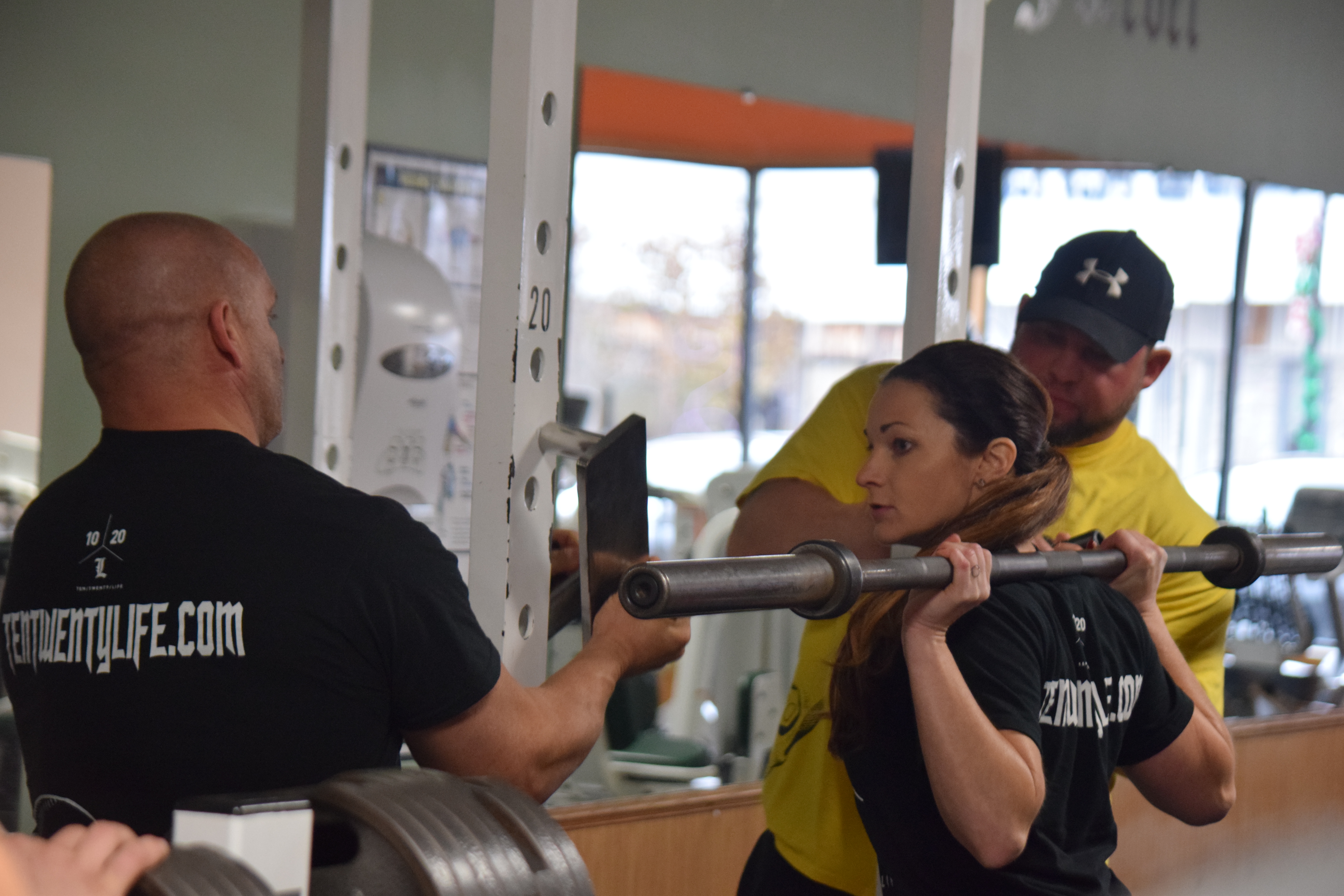
27 May Improve Your Squat In TWO Minutes!
By: Brian Carroll
Even if you only take and apply one or two of the following things to your squat form or approach, I’m willing to bet that your squat will be better almost right away. Form is SO important, and each of us are built differently with different leverages.
Like I’ve talked about at great length, have a mental checklist for the main lifts that become automatic with time. Make every rep the same, and really focus on the areas that you struggle with as it takes time to dial in.
Take what applies to you, and use it. Get a little bit better each day. Best of luck!
MAIN LIFT COACHING CUES
SQUAT:
Below parallel, held at the top, and controlled back into the rack.
APPROACH:
• Tighten your belt, and approach the bar with every muscle in your body as tight as possible.
• Unrack the bar with your body lined up straight under it.
• Walk it out slowly, reemphasizing the tightness of your body.
• Make sure your feet are lined up as evenly as possible.
• Be conscious of your lifter’s wedge, gripping the floor like a monkey and bending the bar.
GRIP:
• Get your hands as close to your shoulders as possible. If you have mobility issues, try to move them closer with each successive set.
• Grip the bar tightly with your hands to keep your upper body tight.
TAKEAWAY:
• Think “controlled, but strong and firm” when you unrack the bar.
• Don’t unrack the bar with one foot forward. Walk up, then insert yourself under it with a parallel stance.
• Walk the weight out by taking one step back with either foot.
STANCE:
• Know your leverages. If you have short femurs like me, you won’t be able to start out in a very wide stance.
• Conversely, if you have long legs and a shorter torso, you’ll be able to squat wider.
• Wide stance squatting involves your glutes, hips, and hamstrings a lot more than squatting with a narrow stance.
• If you have a strong posterior chain, wide stance squatting helps take advantage of this strength.
FOOT POSITION:
• Stand with an outward toe angle, with your heels slightly in, then make changes from there.
• Depending on your physiology, you may have problems hitting depth if you don’t have your feet in a modified “turned-out” position.
• Use trial-and-error to figure out the best position from which you can drive from your heels at the bottom of the lift.
HEAD POSITION:
• Don’t look straight up or directly forward.
• Focus on the point where the wall meets the ceiling.
SITTING BACK:
• Assume the correct position, with your elbows locked down, and your head and chest up.
• Once you’ve walked the bar out, your first action should be to push your butt back. Do this before you bend your knees.
• Breaking your hips first is a much more natural motion than doing so with your knees.
• This is another place for your hip hinge. Use it, and save your back.
• From a narrower stance, you’ll have to descend more quickly because you’re recruiting less muscle.
• Descending quickly from a wide stance won’t give you any additional advantage.
• Take a small breath, making sure your entire body is tight, then take a larger breath and start your descent.
• Hold that breath the entire way down, maintaining stiffness and pushing into your belly.
Get The 10/20/Life Ebook HERE!
Brian Carroll
Latest posts by Brian Carroll (see all)
- Brian Carroll Coaches the Birddog - April 24, 2024
- Protected: -Header Image Post Template 2024 - April 18, 2024
- Brian Carroll X Professor Stu McGill full interview 2024 - April 16, 2024






Sorry, the comment form is closed at this time.